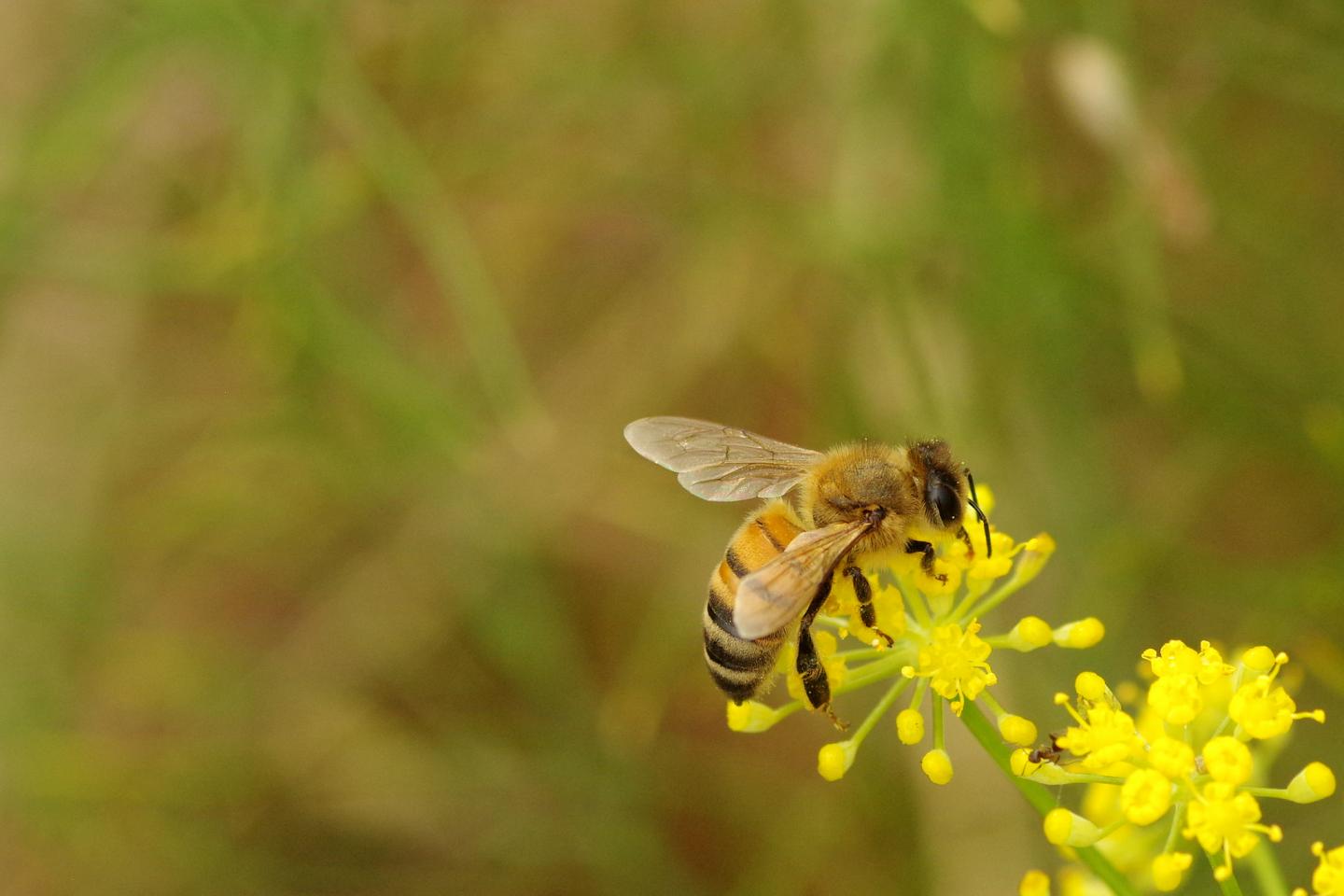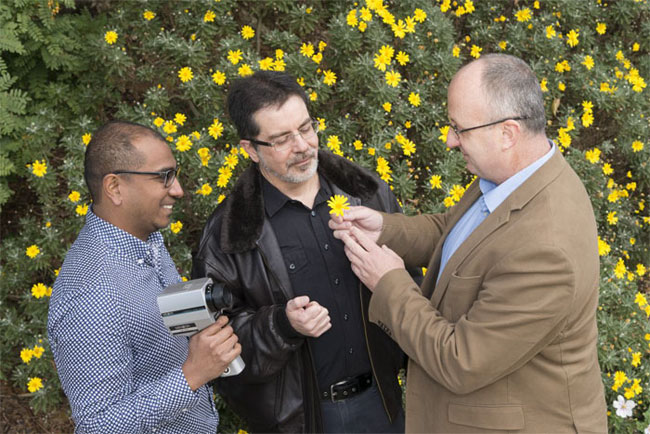MELBOURNE, Australia, Aug. 21, 2017 — Research into the way honeybees see color could provide insight into improving color accuracy in cameras used in outdoor environments.
“For a digital system like a camera or a robot the color of objects often changes. Currently this problem is dealt with by assuming the world is, on average, gray,” said Adrian Dyer, a professor at RMIT University. “This means it’s difficult to identify the true color of ripe fruit or mineral rich sands, limiting outdoor color imaging solutions by drones, for example.”
RMIT joins the University of Melbourne, Monash University and Deakin University as part of a multidisciplinary team involved in the research.

Apis mellifera on Foeniculum vulgare. Courtesy of Luis Mata/RMIT.
Based on the observed relationship between the photoreceptors in the honey bee and the input necessary for optimal color constancy in natural light environments, researchers devised a mathematical approach to color sensing that allows for the changing color of natural light. Their solution to color constancy could be implemented in imaging systems to enable accurate color interpretation.
Researchers observed that, in addition to two compound eyes that directly sense flower colors, a honeybee has three extra eyes (ocelli) on the top of its head. In a discovery made by the researchers, the ocelli were found to contain two color receptors tuned for sensing the color of ambient light.
“Physics suggests the ocelli sensing of the color of light could allow a brain to discount the naturally colored illumination which would otherwise confuse color perception. But for this to be true the information from the ocelli would have to be integrated with colors seen by the compound eyes,” said RMIT researcher Jair Garcia.

Dr. Jair Garcia, Professor Marcello Rosa and Associate Professor Adrian Dyer. Courtesy of Monash University.
To test this hypothesis, the team mapped the neural tracings from ocelli, showing that neural projection did feed to the key color processing areas of the bee brain and that it could provide an optimal color constancy solution even in complex environments.
The team’s findings reveal a neural implementation to color constancy that could be translated into artificial color imaging systems for different light environments, including standard illuminations, natural forest light, sunlight and shade.
“The discovery provides a superb solution to a classic problem and makes color constancy computationally inexpensive,” said John Endler, a professor at Deakin University.
The research was published in Proceedings of the National Academy of Sciences (doi: 10.1073/pnas.1703454114).
New research into the way that honeybees see colour could pave the way for more accurate cameras in phones, drones and robots. Courtesy of RMIT University.